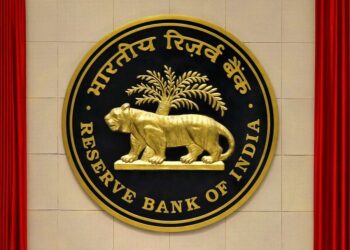The Ministry of Finance has informed that the Department of Financial Services (DFS) continued the momentum of reforms, building on the foundation laid by earlier initiatives like the EASE Reform agenda — focusing on risk assessment, digital transformation, NPA management, financial inclusion, customer service, and more. Here is what the ministry informs about EASE reforms and growth of digital payments in India.
The Enhanced Access and Service Excellence (EASE) Reforms
The EASE Reforms, governed by the EASE Steering Committee of the Indian Bank’s Association, have become deeply ingrained in all PSBs. It aims to bring an exhaustive and all-inclusive revamping and enhancing the capabilities of PSBs to meet the changing demands of the banking landscape. It also offers a common platform for all mid-size and large banks to establish and reinforce industry’s best practices resulting in better services and improved experience for the customers of PSBs at large.
The journey, spanning from EASE 1.0 to the current EASE 6.0, has witnessed a transformative shift, emphasizing digital customer experience, analytics-driven business improvement, tech and data-enabled capability building, and HR operations enhancement, the Ministry of Finance informed via PIB. While the first two versions of EASE focused on building a firm foundation addressing key operational and capability gaps. EASE 3.0 (FY21) and EASE 4.0 (FY22) focused on building new-age capabilities based on digital innovations and analytics insights, accelerating PSBs performance through data driven advanced technological initiatives.
Banks are recognized for their performance in the EASE Agenda in the EASE Awards event every year by the Finance Minister.
After 4-years of successful EASE journey and with all 12 PSBs turning profitable, another event, PSB Manthan 2.0, was held in April 2022 with the entire leadership of PSBs under guidance of the Department of Financial Services to take EASE to the next level. EASENext program was born as its outcome with a significantly bigger, bolder and broader scope having two Pillars: Pillar1- EASE Common Reform Agenda- continues to drive EASE reform initiatives in the same format. Pillar2- 3-Year Bank Specific Strategic roadmap- Banks set up their own Bank specific 3-year strategic roadmap to focus on transformation reforms beyond the common EASE reform agenda.
Under Pillar1, EASE 5.0 (FY23) focused on enhanced digital customer experience, with emphasis on technology integration including emerging cloud adoption, account aggregator, open APIs and data-driven, integrated and inclusive banking solutions.
Present reform, EASE 6.0 (FY24) is conceptualized with 22 Action points under 4 Themes focused on:
Delivering excellence in customer service with digital enablement: Hassle-free branch banking experience, Seamless call-center experience, intuitive mobile/internet banking, complaint redressal, customer acquisition, retention and relationship deepening and Inclusive near-home service delivery.
Digital and analytics-driven business improvement: Comprehensive digital banking for MSMEs, Banking solutions for Agri value chain, Digital marketing for enhanced customer engagement, Digitally-enabled sourcing and servicing of CASA deposit base and Partnership banking.
Tech and data enabled capability building: Strengthening specialized analytics function, Increased adoption of cloud technologies, Digital and analytics driven risk management, collections and recovery, strengthening cybersecurity and preventing cyber frauds.
Developing people and enhancing HR operations: Analyze drivers for employee Productivity, promote gender diversity, Strengthening specialization, succession planning and leadership Development, Data-driven manpower planning, role clarity, and target setting.
Digital Payments
Informing about digital payments in India, the Ministry of Finance stated that digital payment transactions have registered tremendous growth in India over the last few years. The total number of transactions has increased from 2,071 crore in FY2017-18 to 13,462 crore in FY 2022-23. During the current financial year, i.e., FY 2023-24, 8,513 crore digital payment transactions have already been achieved, till October 15, 2023.
Citizens of the country have access to numerous easy and convenient digital payment modes such as UPI, debit/credit cards, IMPS, NEFT, RTGS, AePS, NETC, PPIs which have registered substantial growth, transforming the digital payment ecosystem increasing person-to-person (P2P) and person-to-merchant (P2M) payments.
To promote financial inclusion, Credit Line on UPI, Conversational Payments (Hello! UPI & BillPay Connect) and UPI LITE X were launched in September 2023.
‘Credit Line on UPI’ enables pre-sanctioned credit lines from banks via UPI and will revolutionize customer access to credit, fostering a more streamlined and digital banking ecosystem. With this, the process of availing, connecting, and utilizing credit lines will be significantly expedited, driving economic growth and progress.
Conversational UPI Payments and Conversational Bill Payments underscores the emergence of AI-enabled transactions which will further deepen the reach and use of digital payments in the country. ‘Hello! UPI’, an AI-voice-enabled payment feature built by Bhashini (under MeitY) along with NPCI, allows users to make conversation-based UPI transactions in Hindi and English, using both feature phones and smartphones.
This expansion will broaden payment accessibility for most Indians who are fluent in their native languages, providing significant benefits to senior citizens and the digitally inexperienced. Additionally, through ‘BillPay Connect’, customers can conveniently fetch and pay their bills by sending a simple ‘Hi’ on the messaging app or through their smart home devices by giving voice commands.
‘UPI LITE X’ addresses challenges of remote areas by enabling offline UPI payments and making digital transactions accessible even in low-connectivity regions. It will be accessible to anyone with a compatible device that supports Near Field Communication (NFC). In addition to Scan and Pay (QR), UPI NFC enabled phones can now be used to ‘Tap & Pay’. With this functionality, users now have the option to simply tap NFC-enabled QR codes at merchant locations to complete their payments.








